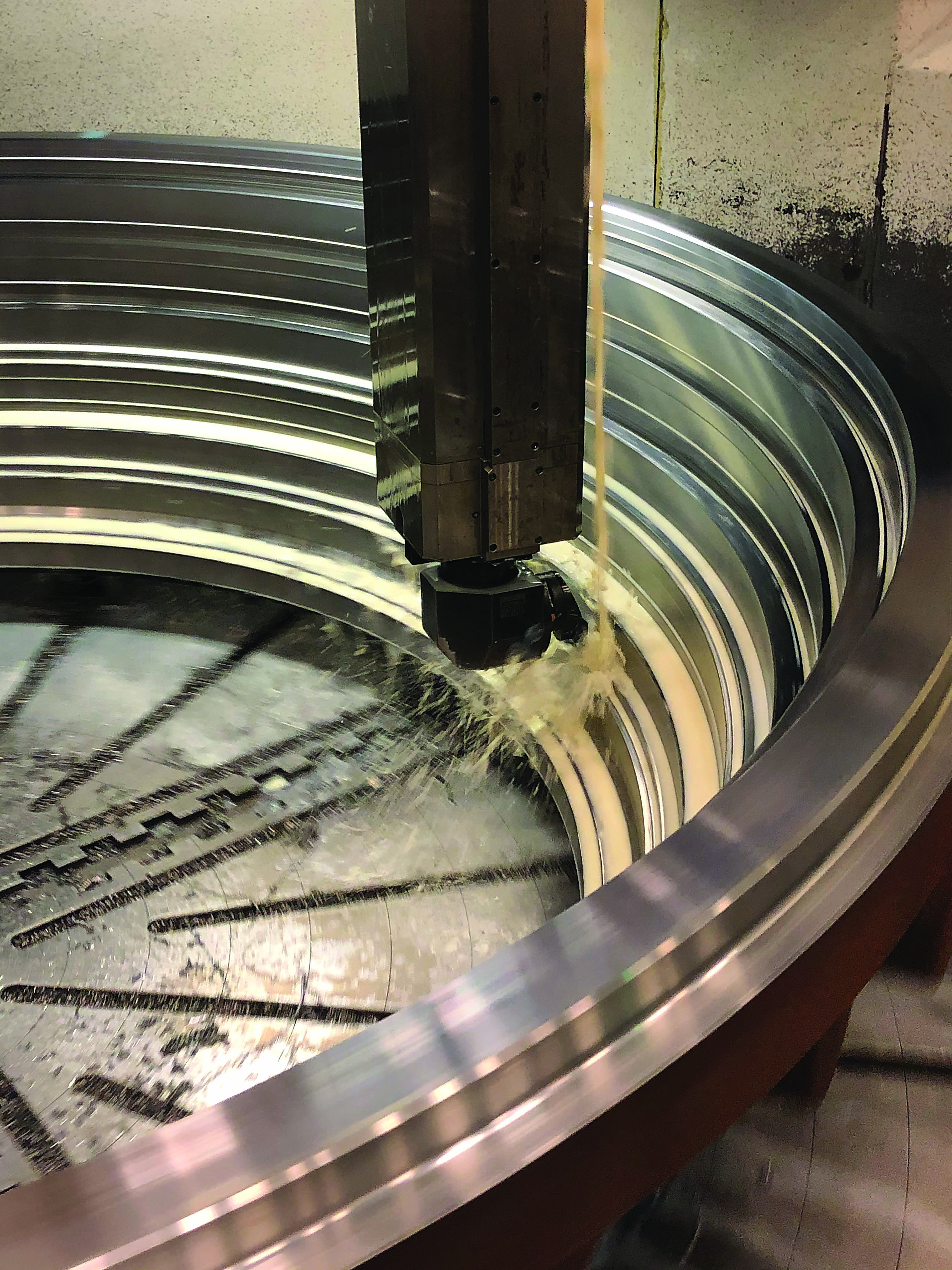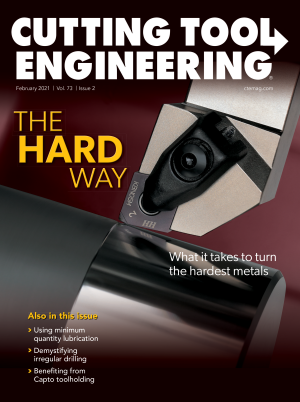At a small machine shop, buying decisions often rest with one individual, such as a shop owner. However, for many of us at large manufacturing companies, buying decisions frequently are complex and require input from several departments, as well as submission of financial justification for purchases.
Improvement projects at my machine shop regularly necessitate new tooling, which means presenting monetary reasons for it. Three years ago, we began a significant improvement project at our shop focused on reducing costs associated with handling and managing cutting tools for our CNC vertical turret lathes, or VTLs.
After completing several root-cause investigations and abundant hours of observations, we decided that the best way to achieve our improvement goal would be to minimize the number of interactions that machinists have with machine tools. Although we have the best machinists in the business, each interaction with a machine tool is an opportunity for someone to make a mistake. So reducing interactions reduces the risk of mistakes.

Adding Capto toolholders to VTLs mitigated issues from not having automatic toolchangers. Image courtesy of C. Tate
Unlike many machines, ours do not have automatic toolchangers or tool setters, so all tool changing activities are manual. Each tool change requires a machinist not only to remove and install tools but to reset tool offsets by touching a datum on the part. The most substantial risks are damaging the part while setting a tool and entering incorrect data when setting tool offsets. Because we have up to 25 tools in a program, there are a lot of opportunities to make mistakes.
Tool change times averaged 20 minutes, so a program with 25 tools had about eight hours of noncutting time. We were trying to reduce the risk to quality and lessen the cost of tool changes.
Our common square-shank turning tools were the problem. Adopting a quick-change system and eliminating the use of square-shank tools would be the key to success.
Capto’s Benefits
After investigating and testing several options on the market, we chose to adopt the Capto toolholding system for our VTLs because of its speed, accuracy, flexibility and availability.
Changing Capto tools is fast. Turn the actuating screw 180 degrees, and the holder is released. Replace it with a different tool, and re-tighten the screw. The whole process is complete in a few seconds, which is much better than the 20 minutes it had taken us to change a square-shank tool.
Accuracy was critical as our goal was to eliminate the need for machinists to set tools by touching parts and minimize the risk of entering incorrect data into offsets. Manufacturers say Capto tools can be removed and replaced with 0.002 mm (0.00008") repeatability. This level of accuracy means we must set a tool only once when it is placed into service. Our roughing tools no longer need any adjustment after insert changes, so the opportunity to enter bad data has been reduced. Unfortunately, finishing tools still demand adjustments after insert changes, but we believe that it will be possible to end those adjustments in the future. Our ultimate goal is a machining utopia in which no adjustments are needed.

Each tool in the tool library is assembled, stored and ready for use. Capto toolholders allow workers to install tools in the spindle without having to reset tool data. Image courtesy of C. Tate
Cutting tools and toolholders are a significant expense at every shop, and creating a tooling system that works on all machines will reduce tooling costs. Capto holders offer a great deal of flexibility to shift tools from machine to machine. All our large horizontal lathes were purchased with a Capto interface, so when we adapted the VTLs to Capto, we immediately formed a system that allows us to share tool configurations between machines. This lowers the inventory of tools we keep and permits us to respond better to machines that are down or overburdened. Because 3D models of Capto tools readily are available, we have created a library of tool configurations in our CAM system, which lessens lead times for CNC programs and program verification.
Availability is an important consideration as special tool configurations often limit configuration choices. Capto tools come in a wide range of sizes — from C3, which has a 30 mm (1.18") flange, up to C10, which has a 100 mm (3.94") flange. Each family of flange sizes offers a large assortment of configurations for every type of turning application. Extensions also are available in several lengths, which makes getting the right length no issue. Most importantly, Capto adapters are obtainable for almost any machine configuration, so any machine tool can be converted to accept Capto’s interface.
The one drawback to Capto tools is their expense. A C8 cutting head — 80 mm (3.15") flange — for a CNMG insert is about five times more expensive than the comparable square-shank tool. Buying a set of adapters for a 12-station, VDI-style turret will approach $15,000. The special adapters that we had manufactured for our VTLs were about $12,000 each. It can take a lot of time savings and improvements to justify the costs.
We could have justified the expense based on lower tool-change costs alone, but significantly reducing the opportunities to make machining errors on ultra-expensive parts made the decision a no-brainer. Capto tools transformed our VTLs into precise, cost-effective and ergonomic work centers.
Related Glossary Terms
- centers
centers
Cone-shaped pins that support a workpiece by one or two ends during machining. The centers fit into holes drilled in the workpiece ends. Centers that turn with the workpiece are called “live” centers; those that do not are called “dead” centers.
- computer numerical control ( CNC)
computer numerical control ( CNC)
Microprocessor-based controller dedicated to a machine tool that permits the creation or modification of parts. Programmed numerical control activates the machine’s servos and spindle drives and controls the various machining operations. See DNC, direct numerical control; NC, numerical control.
- computer-aided manufacturing ( CAM)
computer-aided manufacturing ( CAM)
Use of computers to control machining and manufacturing processes.
- turning
turning
Workpiece is held in a chuck, mounted on a face plate or secured between centers and rotated while a cutting tool, normally a single-point tool, is fed into it along its periphery or across its end or face. Takes the form of straight turning (cutting along the periphery of the workpiece); taper turning (creating a taper); step turning (turning different-size diameters on the same work); chamfering (beveling an edge or shoulder); facing (cutting on an end); turning threads (usually external but can be internal); roughing (high-volume metal removal); and finishing (final light cuts). Performed on lathes, turning centers, chucking machines, automatic screw machines and similar machines.


